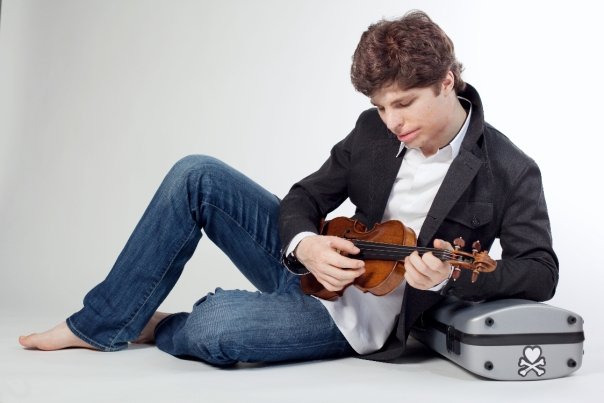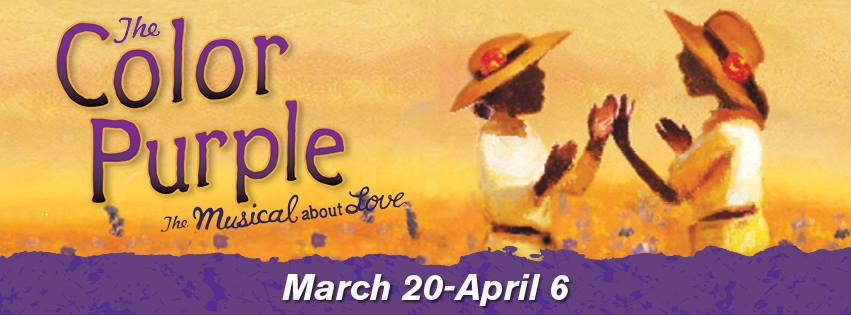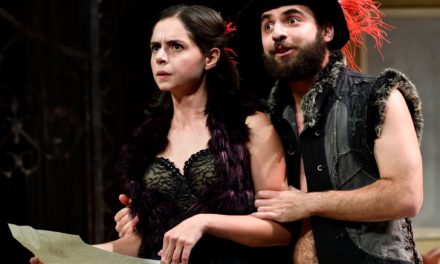Augustin Hadelich
Classics: Brahms & Rachmaninoff
Louisville Orchestra
Teddy Abrams, Conductor
Augustin Hadelich, Violin
Review by Annette Skaggs
Entire contents are copyright © 2016 Annette Skaggs. All rights reserved.
So, let’s shake things up a bit, shall we? I am going to work backwards, starting with the last piece of the weekend, the hauntingly beautiful Symphonic Dances by Rachmaninoff. It cannot be overstated that this piece is among the most oft played of Rachmaninoff’s canon of works and for good reason. These three movements are representative of the composer’s growth and hints at his influence and inspiration. As Maestro Teddy Abrams explained to a full Whitney Hall audience, this piece was the last that Rachmaninoff composed, at the precipice of Modern Music.
Within the first movement we are thrown into succulent woodwinds joined by an alto saxophone. Yes, a saxophone and it is delicious. As is evident in the Second movement and throughout the whole of the piece, there are complicated and conflicting harmonies, but somehow they fit. It takes great patience and a good ear to work through them, but when you do, the loveliest of melodies come forth. Within the Third movement one can hardly mistake the Dies Irae theme that is interwoven throughout. It was almost as if Rachmaninoff knew that this would be his last work. With fascinating tremolos in the viola section, the piece ends as it started, making us appreciate the lasting influence of Rachmaninoff’s works.
On to Brahms and the entrancing performance by guest violinist, Augustin Hadelich. If you are given the chance to hear this amazingly pedigreed musicians’ work, please do so. He has a fabulous gift and a story to go along with it.
In Brahms’ Violin Concerto in D Major, there are many times that notation takes your breath away and Mr. Hadelich played to those moments beautifully. Within the first movement, Allegro non troppo, a charming clarinet solo (Andrea Levine) sets the pace and tone for the whole piece. From there everything builds to musical excitement, including the clever use of the orchestra mimicking the solo violin. The second movement Adagio was spellbinding. Watching Mr. Hadelich performing this section was inspiring. The third movement, Allegro giocoso, ma non troppo vivace – Poco più presto, certainly has a different feel than the other movements; varying tempos, altering melodies and an ever-present violin solo, the Concerto comes to a harmonious close.
As the audience rose to their collective feet in applause, Mr. Hadelich gifted us with an encore piece: Paganini’s Caprice No. 5. If you weren’t impressed with our solo artist yet, you certainly would have been with the encore. The fingering alone is staggering. With dexterity and speed Mr. Hadelich exposed what frets and strings can do, all with a smile.
At the top of the program was a World Premiere. Maestro Abrams invited some students from his alma mater, The Curtis Institute of Music in Philadelphia, to compose music that would be Louisville/Kentucky centric. The up and coming young composers came up with what is collectively called A Curtis Suite. Going again in reverse:
The fourth movement, Run for the Roses, by Louisville-born Rene Orth, was fast and furious, eliciting sounds that one might experience on the first day of May, including the Call to the Post and My Old Kentucky Home. As Ms. Orth stated in her explanation, she was hoping it would be, “the most exciting 2 minutes of music”, that one would hear that evening. Fun.
Altogether Thunder, the third movement, based on Thunder Over Louisville, was composer Emily Cooley’s contribution to the suite, within which she tried to evoke the bombastic sounds of the fireworks and the enjoyment of the audience. Alyssa Weinberg’s Poa Perpetuo, based upon the plant species Poa pratensi, most commonly known to us as Bluegrass. Her composition was influenced by Bluegrass music and the use of ostinato passages, which defer to the title of the piece. I am not sure if I heard a lot of Bluegrass music, but I did hear a little Country-Western therein, and perhaps even a little Rite of Spring.
The highlight of the Suite, in my opinion, was T.J. Cole’s first movement, Thriller Walk. For those that did not know, Louisville is the host to the World’s Largest Zombie Walk, where a good portion of the Highlands becomes Zombieland, with thousands of walkers donning their most grotesque make-up and costumes. I applaud Ms. Cole in her use of the entire orchestra, eliciting some of the most interesting notation, rhythms and playing that I had seen in a long time, especially with the percussion (xylophone) and second violins. I was enthralled from the beginning to the end. I wanted more.
Oh, and the ladies did not collaborate on their pieces. Somehow, it just fit…sort of. I will say that the differentiation between the first and second movements was hard to figure out as there was not a clear and definitive cut off like in other pieces.
I do hope to hear more from these bright and talented ladies: women who compose and represent with stellar results.
I look forward to many more collaborations such as this that are in the pipeline for the Orchestra. As the Maestro was heard saying, these are what make the Louisville Orchestra the Most Interesting Orchestra in the World. Aren’t we Lucky?
Bravo Tutti
PS: Ms. Cole, if you like songs about Zombies, check out a Louisville band called No More Kings. They have a gorgeous song based on Night of the Living Dead called They’re Coming to Get You Barbara. You will be blown away.
Classics: Brahms & Rachmaninoff
January 29 & 30, 2016
Louisville Orchestra
Kentucky Center
501 W. Main Street
Louisville, KY 40202
louisvilleorchestra.org
Annette Skaggs is heavily involved as an Arts Advocate here in Louisville, and is a freelance professional opera singer who has performed throughout Europe, St. Louis, Cincinnati, Boulder, Little Rock, Peoria, Chicago, New York and of course Louisville. Aside from her singing career she has been a production assistant for Kentucky Opera, New York Opera and Northwestern University. She has a 25+ year knowledge of the Classical Arts.




